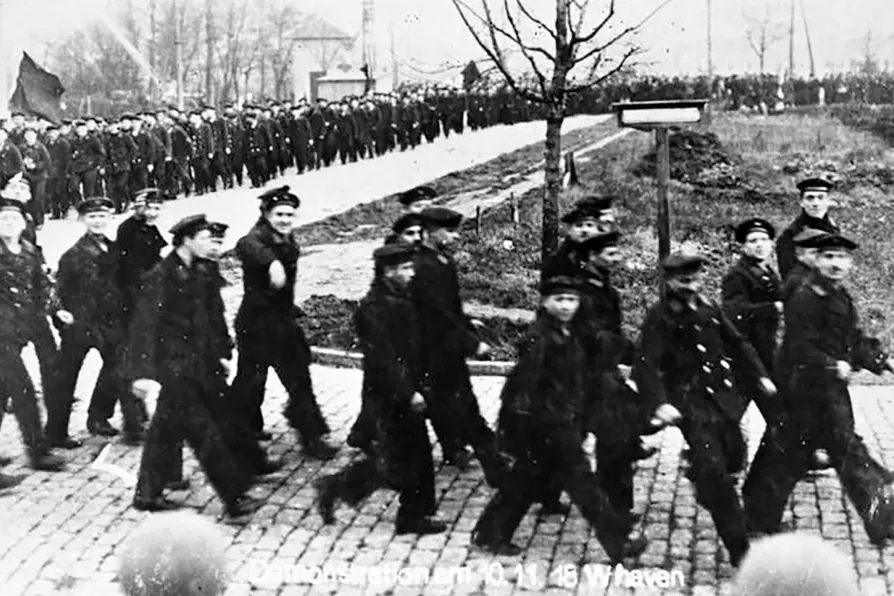
 UPRISING: German sailors demonstrating at the port town of Wilhelmshaven, November 10 1918
UPRISING: German sailors demonstrating at the port town of Wilhelmshaven, November 10 1918
ARMISTICE DAY is promoted as a celebration of national unity, “the day the guns fell silent,” and when the wounds of first world war began to heal.
But the reality is that November 11 1918 marked the start of a new phase of war: the escalation of the class war.
The night before the German high command formally surrendered, Britain’s war cabinet met in Downing Street. The minutes of that meeting reveal that the armistice was not the government’s most important issue.

The obfuscation of Nazism’s capitalist roots has seen imperialism redeploy fascism again and again — from the killing fields of Guatemala to the war in Ukraine, writes PAWEL WARGAN

PHIL KATZ looks at how the Daily Worker, the Morning Star's forerunner, covered the breathless last days of World War II 80 years ago

The pivotal role of the Red Army and sacrifices of the Russian people in the defeat of Nazi Germany must never be forgotten, writes DR DYLAN MURPHY











